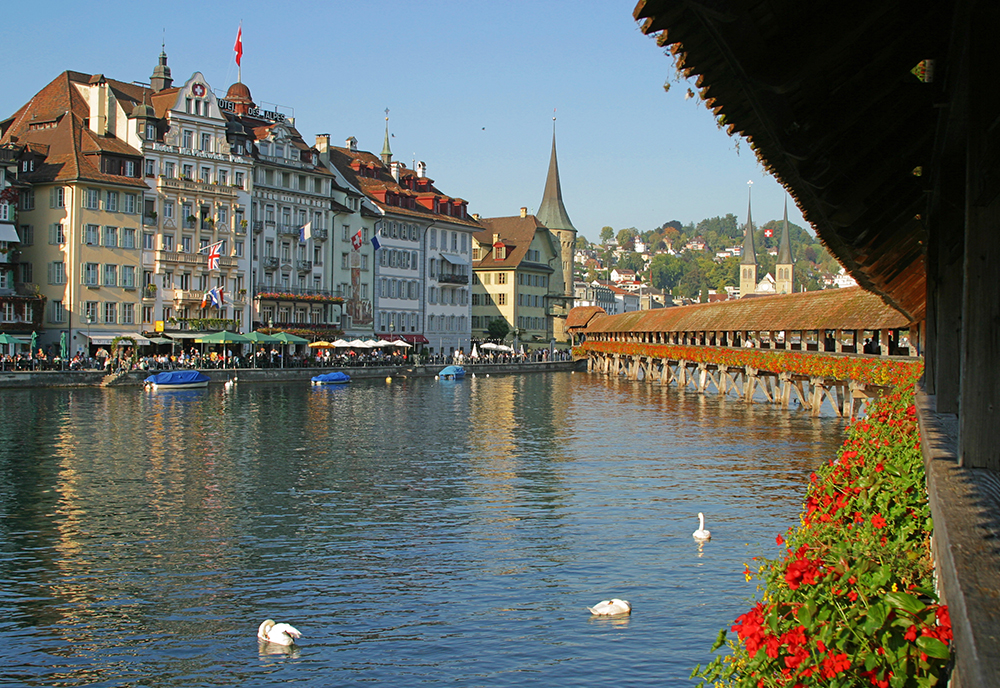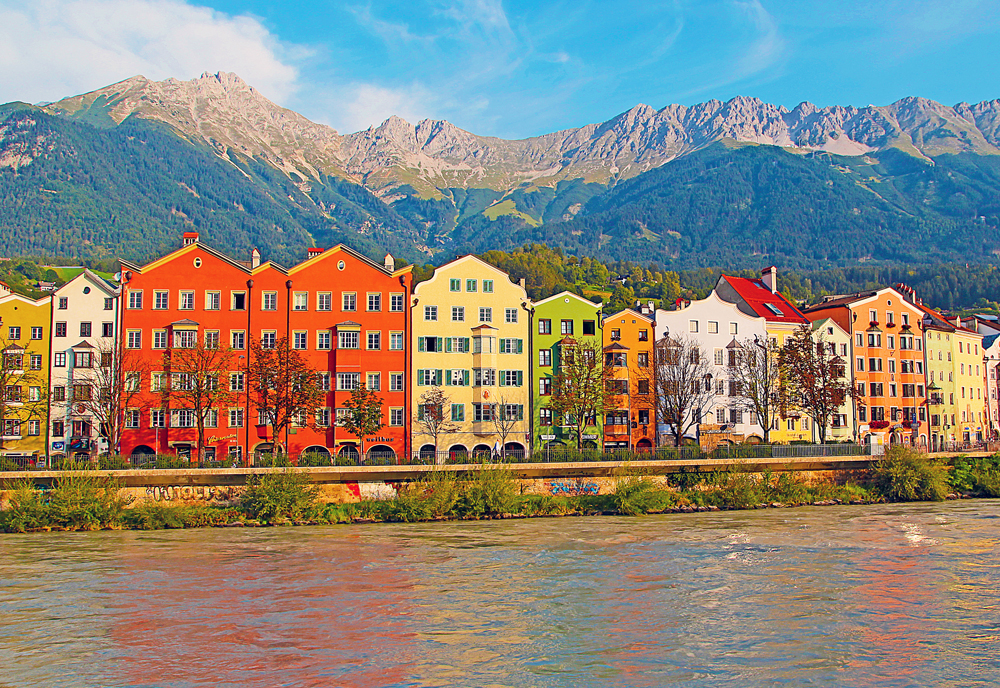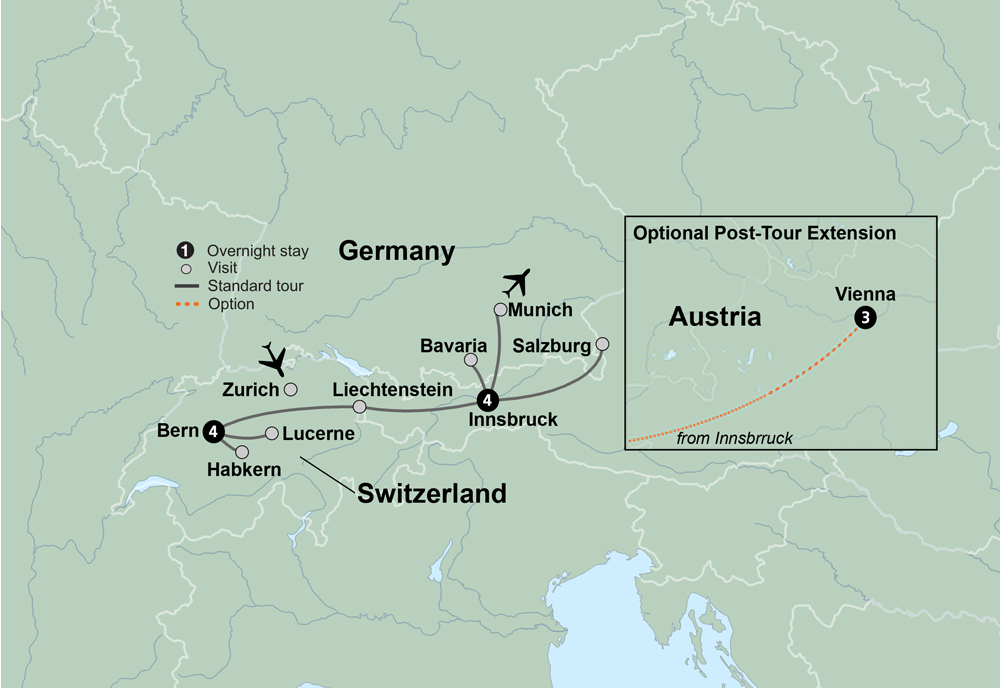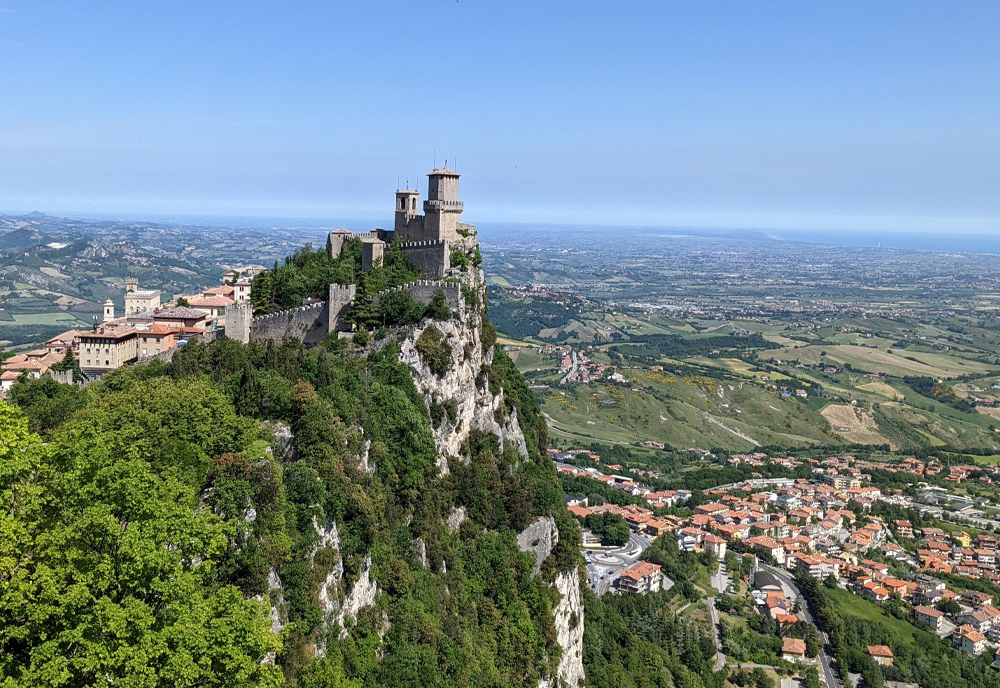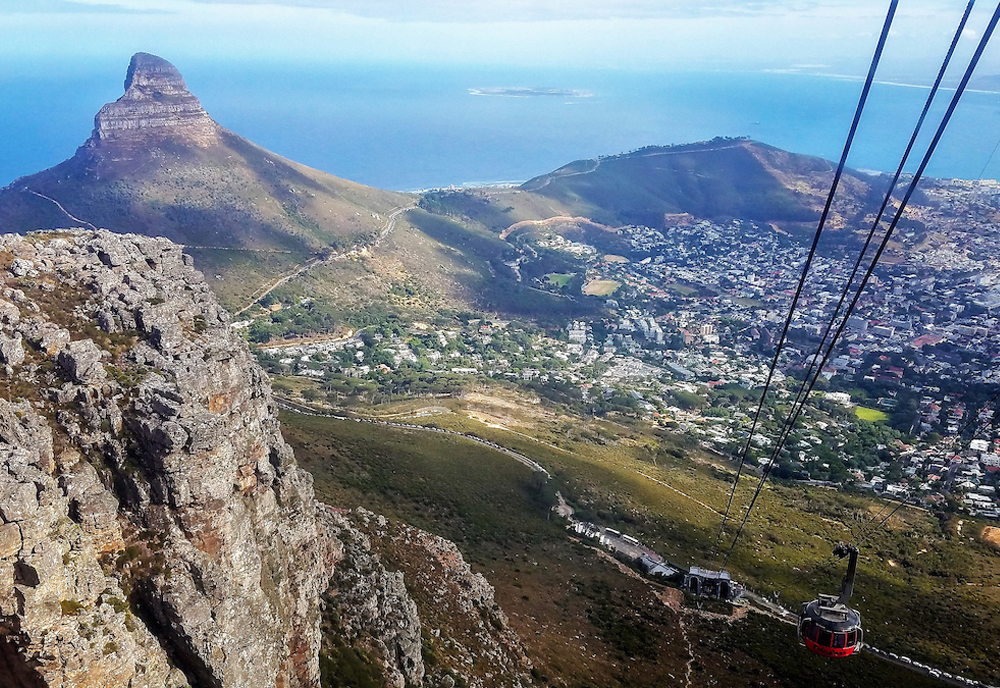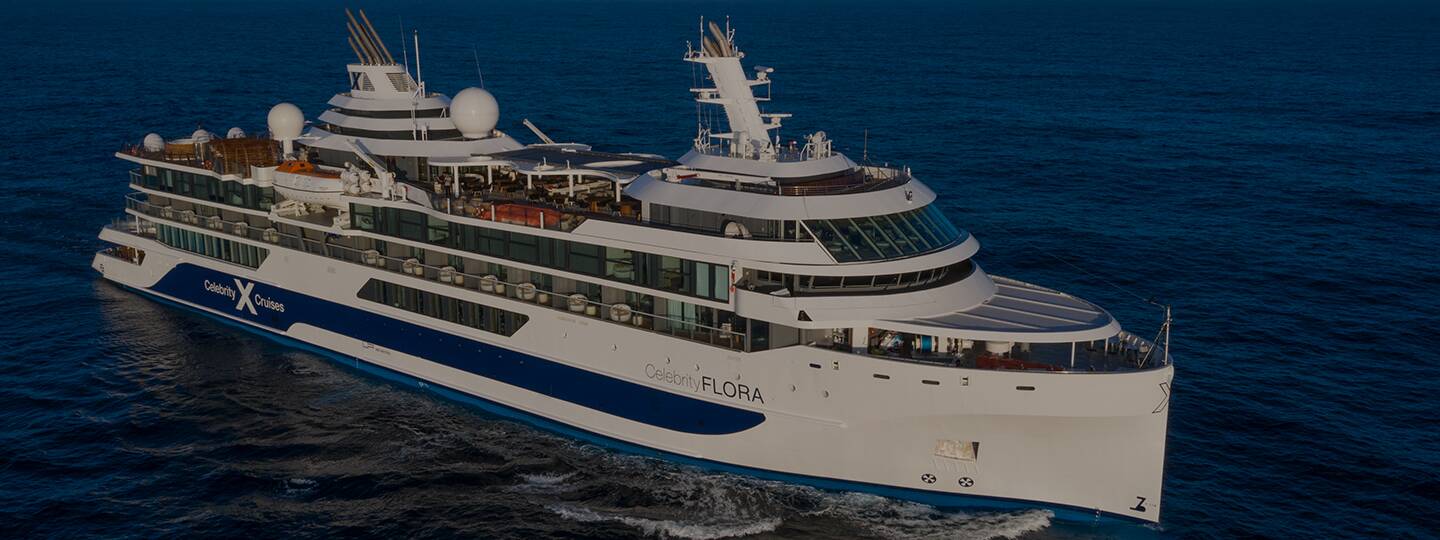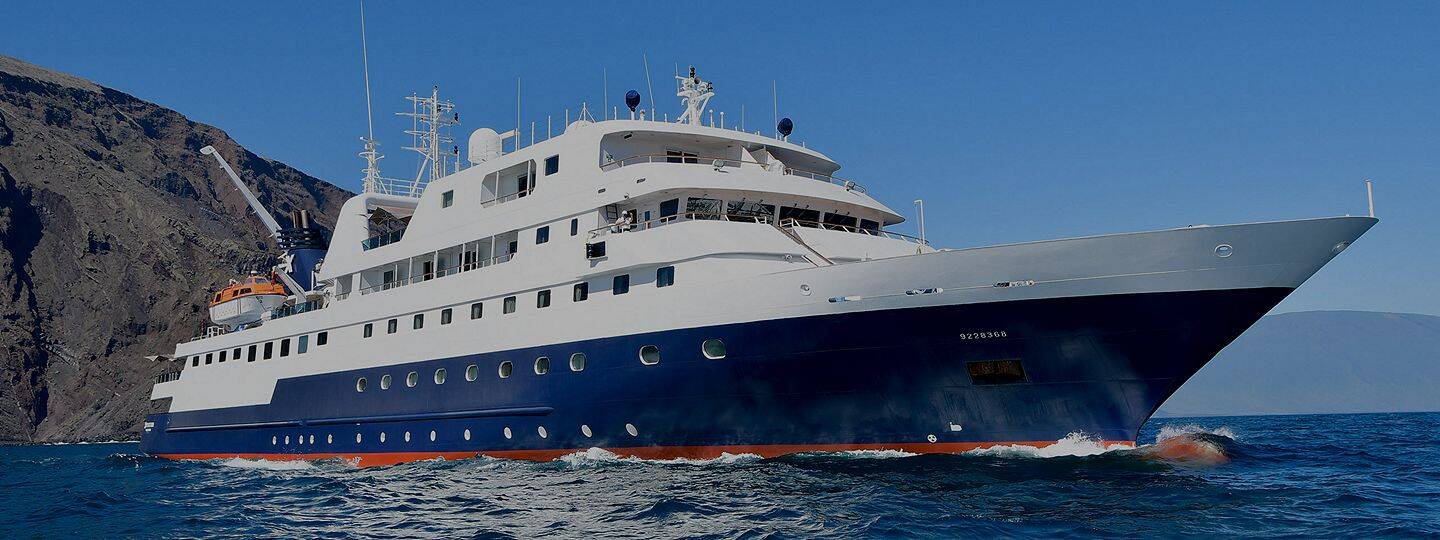Discover Switzerland
Tour, Escorted tour
Alternative
Discover Switzerland
Journey through spectacular mountain scenery and picturesque cities as you experience three Alpine countries and Munich’s legendary Oktoberfest. Spend four nights in the UNESCO World Heritage city of Bern and three nights in the charming Alpine city of Innsbruck. Spend your last night in the vibrant city of Munich. Get a taste of Switzerland when you meet a local alphorn maker & yodelers and enjoy a fondue lunch. Explore Lucerne, the "Swiss Paradise on the Lake." Visit Mozart's birthplace and the Mirabell Gardens, featured in The Sound of Music, during your time in Salzburg. Sample traditional regional cuisine at some of the oldest and most famous restaurants in Europe. Toast to tradition at Munich’s Oktoberfest, dating back to the 1800s. The hills are alive on this enchanting journey across Switzerland, Austria and Bavaria.
Journey through spectacular mountain scenery and picturesque cities as you experience three Alpine countries and Munich’s legendary Oktoberfest. Spend four nights in the UNESCO World Heritage city of Bern and three nights in the charming Alpine city of Innsbruck. Spend your last night in the vibrant city of Munich. Get a taste of Switzerland when you meet a local alphorn maker & yodelers and enjoy a fondue lunch. Explore Lucerne, the "Swiss Paradise on the Lake." Visit Mozart's birthplace and the Mirabell Gardens, featured in The Sound of Music, during your time in Salzburg. Sample traditional regional cuisine at some of the oldest and most famous restaurants in Europe. Toast to tradition at Munich’s Oktoberfest, dating back to the 1800s. The hills are alive on this enchanting journey across Switzerland, Austria and Bavaria.
9 Nights
Starting At
$3,999.00
USD
September 15, 2024 through September 24, 2024
Book by:
September 11, 2024 7:00 PM
Land Only Price
ID: 8337141
Itinerary Map
Loading Itinerary Content...
Highlights
Discover Switzerland
Bern
Bern, the capital of the Swiss Confederation, has a population of about 660,000 in the metro area. It is located in west central Switzerland, in a bend of the Aare River. Legend says that the city got its name from the first animal the founder, Berchtold V, Duke of Zahringen, saw when he was hunting: a bear. In honor of this legend, bears are kept in an enclosure in the city center. The old town is a UNESCO World Heritage site, with its beautifully preserved medieval buildings, and the major sights are the bear pit, the Cathedral and the Zytglogge (medieval clock tower).
Alphorn Maker
Yodeling Demonstration
Fondue Lunch
Lucerne
This city of 80,000 people is in north-central Switzerland in the canton of Lucerne and sits on the shores of Lake Lucerne. The town began with a Benedictine monastery in the 8th century and gained importance from its location on trade routes. The most famous sights in Lucerne are the wooden Kapellbrucke (Chapel Bridge) across the Reuss River, the Hofkirche (Church of St. Leodegar) and the Swiss Museum of Transport. The city celebrates Carnival every year beginning the Thursday before Ash Wednesday. Mt Pilatus, with the world’s steepest cog railway, is visible from Lucerne.
Austrian Alps
This Alpine region covers much of western Austria, and contains some of the highest peaks in the Alps, such as the 12,370 ft/3770 m Wildspitze. The city of Innsbruck is in the heart of the Austrian Alps, and Salzburg is in the foothills on the northeastern end of the mountains. Other well-known destinations in these mountains are Zell am See, St. Anton am Arlberg and Saalbach, and skiing and mountaineering are the most popular activities here.
Cultural City Tour or Architectural Tour
Today in Innsbruck, you have the choice between two activities. First you may choose to embark on a cultural tour to discover the city’s history and popular attractions, including Maria Theresien Strasse, the Hofburg, and the Golden Roof. Your other option is to embark on an architectural tour focusing on Innsbruck’s unique architectural structures, including its famous ski jump.Cultural City TourActivity Level 2: Travelers will need to walk for 30 minutes at a time.Architectural TourActivity Level 2: Travelers will need to walk for 30 minutes at a time.
Innsbruck
This is the capital of the state of Tyrol in the Alps of western Austria. Innsbruck is famous as a winter sports center and was the site of the 1964 and 1976 Winter Olympics. It is beautifully situated in the valley of the Inn River, and its most famous sights are the Golden Roof (a structure made from 2,800 gilded copper tiles that was added in 1500 to a building to celebrate the marriage of Emperor Maximilian I), the beautifully preserved city center with buildings covered in traditional Christmas decorations in the season, and the surrounding mountains.
Salzburg
The name of this city means “Salt Fortress” and it comes from the custom of taxing salt shipments down the Salzach River. It is the 4th largest city in Austria, and the capital of the state of Salzburg. The baroque Old Town is a UNESCO World Heritage site, and the city sits in a valley surrounded by the Alps. Mozart was born here in the 18th century, and the city was the setting for “The Sound of Music”. Salzburg became part of Austria in the early 19th century, given by Bavaria. Some of the important sights are the Salzburg Castle, Salzburg Cathedral, Mirabell Gardens, the birthplace of Mozart and sites associated with “The Sound of Music.”
Mirabell Gardens
These gardens are located on the grounds of the Mirabell Palace, built by Prince-Archbishop Wolf Raitenau for his mistress, Salome Alt in 1606, and she lived there for 6 years until he was deposed. The gardens were created in the early 18th century , and are geometrically designed and filled with mythology-inspired sculptures. Emperor Franz Joseph opened the gardens to the public in 1854. Scenes from “The Sound of Music” were filmed here, including the “Do Re Mi” song with the children dancing around a horse fountain.
St. Peter's Restaurant
Enjoy the 1,200-year-old St. Peter’s restaurant. Stiftskeller St. Peter is a restaurant within the monastery walls of St. Peter's Arch abbey in Salzburg, Austria. At the heart of Europe’s oldest restaurant, which dates back to 803, is Austrian culture, history and modernity. St. Peter Stiftskeller first built as inn, prospered into homes of the nobility including Austrian composer, Michael Haydn. It soon became the quarters for French troops during the Napoleonic wars in 1809. The culinary arts have flourished for centuries at St. Peter Stiftskeller and continue to evolve. Seasonal changes and sophisticated ingredients contribute to an ever-changing dining experience.
Bavaria
Bavaria is a state of Germany, located in the southeast, and its capital is Munich. It makes up almost 1/5 of Germany today, and was a powerful Duchy and Kingdom dating from 555 until its inclusion in modern Germany in the 19th century. The flag is white and blue, representing the colors of sky and heaven. Much of southern Bavaria is in the Alps, including the town of Oberammeragau. Many Bavarians consider themselves Bavaria first, German second. For many Americans, Bavaria brings to mind cars (BMW) and beer (Munich’s Oktoberfest).
Linderhof Palace
Inspired by Versailles and built by King Ludwig II of Bavaria in 1886, Linderhof Palace has a Baroque facade with rich Rococco ornamentation inside. The Palace is an excellent way to see the incomparable artistry of the era’s craftspeople. Look for such lush decorations as a carpet made of ostrich plumes, an ivory candelabra and a table top inlayed with lapis-lazuli, amethyst and chalcedony.
Tyrolean Folklore Show
Traditional costumes for the Tyrol region in Austria include lederhosen and dirndls, and brightly embroidered fabrics. The dances are similar to jigs, and the most famous is the Schuhplattler (shoe-slapping) dance. The instruments may include long Alpine horns, cow bells, zithers and harps. Yodeling is also sometimes featured.
Munich Oktoberfest
At Munich’s Oktoberfest, find local cuisine, traditional costumes, amusement rides, live music, travelers from all over the world, millions of beer liters, and more. Oktoberfest is a folk festival from the 1800s that has inspired countless renditions worldwide. The celebration lasts for 3 weeks, starting in the middle of September and ending on the first Sunday of October. Beer tents line the festival, each containing the capacity for thousands of visitors. Only beer brewed in Munich can be served at the festival, and it must meet strict criteria outlined in the Reinheitsgebot. The Bavarian gathering was originally established to celebrate the marriage of King Ludwig I and Princess Therese, but has evolved over time to include the celebration of local agriculture as well.
Bern
Bern, the capital of the Swiss Confederation, has a population of about 660,000 in the metro area. It is located in west central Switzerland, in a bend of the Aare River. Legend says that the city got its name from the first animal the founder, Berchtold V, Duke of Zahringen, saw when he was hunting: a bear. In honor of this legend, bears are kept in an enclosure in the city center. The old town is a UNESCO World Heritage site, with its beautifully preserved medieval buildings, and the major sights are the bear pit, the Cathedral and the Zytglogge (medieval clock tower).
Alphorn Maker
Yodeling Demonstration
Fondue Lunch
Lucerne
This city of 80,000 people is in north-central Switzerland in the canton of Lucerne and sits on the shores of Lake Lucerne. The town began with a Benedictine monastery in the 8th century and gained importance from its location on trade routes. The most famous sights in Lucerne are the wooden Kapellbrucke (Chapel Bridge) across the Reuss River, the Hofkirche (Church of St. Leodegar) and the Swiss Museum of Transport. The city celebrates Carnival every year beginning the Thursday before Ash Wednesday. Mt Pilatus, with the world’s steepest cog railway, is visible from Lucerne.
Austrian Alps
This Alpine region covers much of western Austria, and contains some of the highest peaks in the Alps, such as the 12,370 ft/3770 m Wildspitze. The city of Innsbruck is in the heart of the Austrian Alps, and Salzburg is in the foothills on the northeastern end of the mountains. Other well-known destinations in these mountains are Zell am See, St. Anton am Arlberg and Saalbach, and skiing and mountaineering are the most popular activities here.
Cultural City Tour or Architectural Tour
Today in Innsbruck, you have the choice between two activities. First you may choose to embark on a cultural tour to discover the city’s history and popular attractions, including Maria Theresien Strasse, the Hofburg, and the Golden Roof. Your other option is to embark on an architectural tour focusing on Innsbruck’s unique architectural structures, including its famous ski jump.Cultural City TourActivity Level 2: Travelers will need to walk for 30 minutes at a time.Architectural TourActivity Level 2: Travelers will need to walk for 30 minutes at a time.
Innsbruck
This is the capital of the state of Tyrol in the Alps of western Austria. Innsbruck is famous as a winter sports center and was the site of the 1964 and 1976 Winter Olympics. It is beautifully situated in the valley of the Inn River, and its most famous sights are the Golden Roof (a structure made from 2,800 gilded copper tiles that was added in 1500 to a building to celebrate the marriage of Emperor Maximilian I), the beautifully preserved city center with buildings covered in traditional Christmas decorations in the season, and the surrounding mountains.
Salzburg
The name of this city means “Salt Fortress” and it comes from the custom of taxing salt shipments down the Salzach River. It is the 4th largest city in Austria, and the capital of the state of Salzburg. The baroque Old Town is a UNESCO World Heritage site, and the city sits in a valley surrounded by the Alps. Mozart was born here in the 18th century, and the city was the setting for “The Sound of Music”. Salzburg became part of Austria in the early 19th century, given by Bavaria. Some of the important sights are the Salzburg Castle, Salzburg Cathedral, Mirabell Gardens, the birthplace of Mozart and sites associated with “The Sound of Music.”
Mirabell Gardens
These gardens are located on the grounds of the Mirabell Palace, built by Prince-Archbishop Wolf Raitenau for his mistress, Salome Alt in 1606, and she lived there for 6 years until he was deposed. The gardens were created in the early 18th century , and are geometrically designed and filled with mythology-inspired sculptures. Emperor Franz Joseph opened the gardens to the public in 1854. Scenes from “The Sound of Music” were filmed here, including the “Do Re Mi” song with the children dancing around a horse fountain.
St. Peter's Restaurant
Enjoy the 1,200-year-old St. Peter’s restaurant. Stiftskeller St. Peter is a restaurant within the monastery walls of St. Peter's Arch abbey in Salzburg, Austria. At the heart of Europe’s oldest restaurant, which dates back to 803, is Austrian culture, history and modernity. St. Peter Stiftskeller first built as inn, prospered into homes of the nobility including Austrian composer, Michael Haydn. It soon became the quarters for French troops during the Napoleonic wars in 1809. The culinary arts have flourished for centuries at St. Peter Stiftskeller and continue to evolve. Seasonal changes and sophisticated ingredients contribute to an ever-changing dining experience.
Bavaria
Bavaria is a state of Germany, located in the southeast, and its capital is Munich. It makes up almost 1/5 of Germany today, and was a powerful Duchy and Kingdom dating from 555 until its inclusion in modern Germany in the 19th century. The flag is white and blue, representing the colors of sky and heaven. Much of southern Bavaria is in the Alps, including the town of Oberammeragau. Many Bavarians consider themselves Bavaria first, German second. For many Americans, Bavaria brings to mind cars (BMW) and beer (Munich’s Oktoberfest).
Linderhof Palace
Inspired by Versailles and built by King Ludwig II of Bavaria in 1886, Linderhof Palace has a Baroque facade with rich Rococco ornamentation inside. The Palace is an excellent way to see the incomparable artistry of the era’s craftspeople. Look for such lush decorations as a carpet made of ostrich plumes, an ivory candelabra and a table top inlayed with lapis-lazuli, amethyst and chalcedony.
Tyrolean Folklore Show
Traditional costumes for the Tyrol region in Austria include lederhosen and dirndls, and brightly embroidered fabrics. The dances are similar to jigs, and the most famous is the Schuhplattler (shoe-slapping) dance. The instruments may include long Alpine horns, cow bells, zithers and harps. Yodeling is also sometimes featured.
Munich Oktoberfest
At Munich’s Oktoberfest, find local cuisine, traditional costumes, amusement rides, live music, travelers from all over the world, millions of beer liters, and more. Oktoberfest is a folk festival from the 1800s that has inspired countless renditions worldwide. The celebration lasts for 3 weeks, starting in the middle of September and ending on the first Sunday of October. Beer tents line the festival, each containing the capacity for thousands of visitors. Only beer brewed in Munich can be served at the festival, and it must meet strict criteria outlined in the Reinheitsgebot. The Bavarian gathering was originally established to celebrate the marriage of King Ludwig I and Princess Therese, but has evolved over time to include the celebration of local agriculture as well.
Hotels
Discover Switzerland
Hotel Bern
Zeughausgasse 9, Bern, Switzerland
Hotel Innsbruck
Innrain 3, Innsbruck, Austria
NH Collection München Bavaria
Arnulf Strasse 2, Munich, Germany
Hotel Bern
Zeughausgasse 9, Bern, Switzerland
Hotel Innsbruck
Innrain 3, Innsbruck, Austria
NH Collection München Bavaria
Arnulf Strasse 2, Munich, Germany
Highlights
Discover Switzerland
Bern
Bern, the capital of the Swiss Confederation, has a population of about 660,000 in the metro area. It is located in west central Switzerland, in a bend of the Aare River. Legend says that the city got its name from the first animal the founder, Berchtold V, Duke of Zahringen, saw when he was hunting: a bear. In honor of this legend, bears are kept in an enclosure in the city center. The old town is a UNESCO World Heritage site, with its beautifully preserved medieval buildings, and the major sights are the bear pit, the Cathedral and the Zytglogge (medieval clock tower).
Alphorn Maker
Yodeling Demonstration
Fondue Lunch
Lucerne
This city of 80,000 people is in north-central Switzerland in the canton of Lucerne and sits on the shores of Lake Lucerne. The town began with a Benedictine monastery in the 8th century and gained importance from its location on trade routes. The most famous sights in Lucerne are the wooden Kapellbrucke (Chapel Bridge) across the Reuss River, the Hofkirche (Church of St. Leodegar) and the Swiss Museum of Transport. The city celebrates Carnival every year beginning the Thursday before Ash Wednesday. Mt Pilatus, with the world’s steepest cog railway, is visible from Lucerne.
Austrian Alps
This Alpine region covers much of western Austria, and contains some of the highest peaks in the Alps, such as the 12,370 ft/3770 m Wildspitze. The city of Innsbruck is in the heart of the Austrian Alps, and Salzburg is in the foothills on the northeastern end of the mountains. Other well-known destinations in these mountains are Zell am See, St. Anton am Arlberg and Saalbach, and skiing and mountaineering are the most popular activities here.
Cultural City Tour or Architectural Tour
Today in Innsbruck, you have the choice between two activities. First you may choose to embark on a cultural tour to discover the city’s history and popular attractions, including Maria Theresien Strasse, the Hofburg, and the Golden Roof. Your other option is to embark on an architectural tour focusing on Innsbruck’s unique architectural structures, including its famous ski jump.Cultural City TourActivity Level 2: Travelers will need to walk for 30 minutes at a time.Architectural TourActivity Level 2: Travelers will need to walk for 30 minutes at a time.
Innsbruck
This is the capital of the state of Tyrol in the Alps of western Austria. Innsbruck is famous as a winter sports center and was the site of the 1964 and 1976 Winter Olympics. It is beautifully situated in the valley of the Inn River, and its most famous sights are the Golden Roof (a structure made from 2,800 gilded copper tiles that was added in 1500 to a building to celebrate the marriage of Emperor Maximilian I), the beautifully preserved city center with buildings covered in traditional Christmas decorations in the season, and the surrounding mountains.
Salzburg
The name of this city means “Salt Fortress” and it comes from the custom of taxing salt shipments down the Salzach River. It is the 4th largest city in Austria, and the capital of the state of Salzburg. The baroque Old Town is a UNESCO World Heritage site, and the city sits in a valley surrounded by the Alps. Mozart was born here in the 18th century, and the city was the setting for “The Sound of Music”. Salzburg became part of Austria in the early 19th century, given by Bavaria. Some of the important sights are the Salzburg Castle, Salzburg Cathedral, Mirabell Gardens, the birthplace of Mozart and sites associated with “The Sound of Music.”
Mirabell Gardens
These gardens are located on the grounds of the Mirabell Palace, built by Prince-Archbishop Wolf Raitenau for his mistress, Salome Alt in 1606, and she lived there for 6 years until he was deposed. The gardens were created in the early 18th century , and are geometrically designed and filled with mythology-inspired sculptures. Emperor Franz Joseph opened the gardens to the public in 1854. Scenes from “The Sound of Music” were filmed here, including the “Do Re Mi” song with the children dancing around a horse fountain.
St. Peter's Restaurant
Enjoy the 1,200-year-old St. Peter’s restaurant. Stiftskeller St. Peter is a restaurant within the monastery walls of St. Peter's Arch abbey in Salzburg, Austria. At the heart of Europe’s oldest restaurant, which dates back to 803, is Austrian culture, history and modernity. St. Peter Stiftskeller first built as inn, prospered into homes of the nobility including Austrian composer, Michael Haydn. It soon became the quarters for French troops during the Napoleonic wars in 1809. The culinary arts have flourished for centuries at St. Peter Stiftskeller and continue to evolve. Seasonal changes and sophisticated ingredients contribute to an ever-changing dining experience.
Bavaria
Bavaria is a state of Germany, located in the southeast, and its capital is Munich. It makes up almost 1/5 of Germany today, and was a powerful Duchy and Kingdom dating from 555 until its inclusion in modern Germany in the 19th century. The flag is white and blue, representing the colors of sky and heaven. Much of southern Bavaria is in the Alps, including the town of Oberammeragau. Many Bavarians consider themselves Bavaria first, German second. For many Americans, Bavaria brings to mind cars (BMW) and beer (Munich’s Oktoberfest).
Linderhof Palace
Inspired by Versailles and built by King Ludwig II of Bavaria in 1886, Linderhof Palace has a Baroque facade with rich Rococco ornamentation inside. The Palace is an excellent way to see the incomparable artistry of the era’s craftspeople. Look for such lush decorations as a carpet made of ostrich plumes, an ivory candelabra and a table top inlayed with lapis-lazuli, amethyst and chalcedony.
Tyrolean Folklore Show
Traditional costumes for the Tyrol region in Austria include lederhosen and dirndls, and brightly embroidered fabrics. The dances are similar to jigs, and the most famous is the Schuhplattler (shoe-slapping) dance. The instruments may include long Alpine horns, cow bells, zithers and harps. Yodeling is also sometimes featured.
Munich Oktoberfest
At Munich’s Oktoberfest, find local cuisine, traditional costumes, amusement rides, live music, travelers from all over the world, millions of beer liters, and more. Oktoberfest is a folk festival from the 1800s that has inspired countless renditions worldwide. The celebration lasts for 3 weeks, starting in the middle of September and ending on the first Sunday of October. Beer tents line the festival, each containing the capacity for thousands of visitors. Only beer brewed in Munich can be served at the festival, and it must meet strict criteria outlined in the Reinheitsgebot. The Bavarian gathering was originally established to celebrate the marriage of King Ludwig I and Princess Therese, but has evolved over time to include the celebration of local agriculture as well.
Bern
Bern, the capital of the Swiss Confederation, has a population of about 660,000 in the metro area. It is located in west central Switzerland, in a bend of the Aare River. Legend says that the city got its name from the first animal the founder, Berchtold V, Duke of Zahringen, saw when he was hunting: a bear. In honor of this legend, bears are kept in an enclosure in the city center. The old town is a UNESCO World Heritage site, with its beautifully preserved medieval buildings, and the major sights are the bear pit, the Cathedral and the Zytglogge (medieval clock tower).
Alphorn Maker
Yodeling Demonstration
Fondue Lunch
Lucerne
This city of 80,000 people is in north-central Switzerland in the canton of Lucerne and sits on the shores of Lake Lucerne. The town began with a Benedictine monastery in the 8th century and gained importance from its location on trade routes. The most famous sights in Lucerne are the wooden Kapellbrucke (Chapel Bridge) across the Reuss River, the Hofkirche (Church of St. Leodegar) and the Swiss Museum of Transport. The city celebrates Carnival every year beginning the Thursday before Ash Wednesday. Mt Pilatus, with the world’s steepest cog railway, is visible from Lucerne.
Austrian Alps
This Alpine region covers much of western Austria, and contains some of the highest peaks in the Alps, such as the 12,370 ft/3770 m Wildspitze. The city of Innsbruck is in the heart of the Austrian Alps, and Salzburg is in the foothills on the northeastern end of the mountains. Other well-known destinations in these mountains are Zell am See, St. Anton am Arlberg and Saalbach, and skiing and mountaineering are the most popular activities here.
Cultural City Tour or Architectural Tour
Today in Innsbruck, you have the choice between two activities. First you may choose to embark on a cultural tour to discover the city’s history and popular attractions, including Maria Theresien Strasse, the Hofburg, and the Golden Roof. Your other option is to embark on an architectural tour focusing on Innsbruck’s unique architectural structures, including its famous ski jump.Cultural City TourActivity Level 2: Travelers will need to walk for 30 minutes at a time.Architectural TourActivity Level 2: Travelers will need to walk for 30 minutes at a time.
Innsbruck
This is the capital of the state of Tyrol in the Alps of western Austria. Innsbruck is famous as a winter sports center and was the site of the 1964 and 1976 Winter Olympics. It is beautifully situated in the valley of the Inn River, and its most famous sights are the Golden Roof (a structure made from 2,800 gilded copper tiles that was added in 1500 to a building to celebrate the marriage of Emperor Maximilian I), the beautifully preserved city center with buildings covered in traditional Christmas decorations in the season, and the surrounding mountains.
Salzburg
The name of this city means “Salt Fortress” and it comes from the custom of taxing salt shipments down the Salzach River. It is the 4th largest city in Austria, and the capital of the state of Salzburg. The baroque Old Town is a UNESCO World Heritage site, and the city sits in a valley surrounded by the Alps. Mozart was born here in the 18th century, and the city was the setting for “The Sound of Music”. Salzburg became part of Austria in the early 19th century, given by Bavaria. Some of the important sights are the Salzburg Castle, Salzburg Cathedral, Mirabell Gardens, the birthplace of Mozart and sites associated with “The Sound of Music.”
Mirabell Gardens
These gardens are located on the grounds of the Mirabell Palace, built by Prince-Archbishop Wolf Raitenau for his mistress, Salome Alt in 1606, and she lived there for 6 years until he was deposed. The gardens were created in the early 18th century , and are geometrically designed and filled with mythology-inspired sculptures. Emperor Franz Joseph opened the gardens to the public in 1854. Scenes from “The Sound of Music” were filmed here, including the “Do Re Mi” song with the children dancing around a horse fountain.
St. Peter's Restaurant
Enjoy the 1,200-year-old St. Peter’s restaurant. Stiftskeller St. Peter is a restaurant within the monastery walls of St. Peter's Arch abbey in Salzburg, Austria. At the heart of Europe’s oldest restaurant, which dates back to 803, is Austrian culture, history and modernity. St. Peter Stiftskeller first built as inn, prospered into homes of the nobility including Austrian composer, Michael Haydn. It soon became the quarters for French troops during the Napoleonic wars in 1809. The culinary arts have flourished for centuries at St. Peter Stiftskeller and continue to evolve. Seasonal changes and sophisticated ingredients contribute to an ever-changing dining experience.
Bavaria
Bavaria is a state of Germany, located in the southeast, and its capital is Munich. It makes up almost 1/5 of Germany today, and was a powerful Duchy and Kingdom dating from 555 until its inclusion in modern Germany in the 19th century. The flag is white and blue, representing the colors of sky and heaven. Much of southern Bavaria is in the Alps, including the town of Oberammeragau. Many Bavarians consider themselves Bavaria first, German second. For many Americans, Bavaria brings to mind cars (BMW) and beer (Munich’s Oktoberfest).
Linderhof Palace
Inspired by Versailles and built by King Ludwig II of Bavaria in 1886, Linderhof Palace has a Baroque facade with rich Rococco ornamentation inside. The Palace is an excellent way to see the incomparable artistry of the era’s craftspeople. Look for such lush decorations as a carpet made of ostrich plumes, an ivory candelabra and a table top inlayed with lapis-lazuli, amethyst and chalcedony.
Tyrolean Folklore Show
Traditional costumes for the Tyrol region in Austria include lederhosen and dirndls, and brightly embroidered fabrics. The dances are similar to jigs, and the most famous is the Schuhplattler (shoe-slapping) dance. The instruments may include long Alpine horns, cow bells, zithers and harps. Yodeling is also sometimes featured.
Munich Oktoberfest
At Munich’s Oktoberfest, find local cuisine, traditional costumes, amusement rides, live music, travelers from all over the world, millions of beer liters, and more. Oktoberfest is a folk festival from the 1800s that has inspired countless renditions worldwide. The celebration lasts for 3 weeks, starting in the middle of September and ending on the first Sunday of October. Beer tents line the festival, each containing the capacity for thousands of visitors. Only beer brewed in Munich can be served at the festival, and it must meet strict criteria outlined in the Reinheitsgebot. The Bavarian gathering was originally established to celebrate the marriage of King Ludwig I and Princess Therese, but has evolved over time to include the celebration of local agriculture as well.
Hotels
Discover Switzerland
Hotel Bern
Zeughausgasse 9, Bern, Switzerland
Hotel Innsbruck
Innrain 3, Innsbruck, Austria
NH Collection München Bavaria
Arnulf Strasse 2, Munich, Germany
Hotel Bern
Zeughausgasse 9, Bern, Switzerland
Hotel Innsbruck
Innrain 3, Innsbruck, Austria
NH Collection München Bavaria
Arnulf Strasse 2, Munich, Germany
About Collette

More trips from Collette
Cancel for Any Reason - Travel Protection Plan
The Traveling Well Experience - On-Tour Wellness & Quality Measures
With Collette, the World is Within Your Reach
True adventures go beyond incredible destinations or inclusive packages. Collette delivers a sense of possibility across all seven continents.
Since 1918, we have been sharing our love of travel. Today our worldwide travel collection features comprehensive land tours, river cruises, rail journeys, small group tours, family trips, garden holidays and more. With Collette, wake each morning on tour with a new experience in front of you, and when your head hits the pillow, you will know it has been an amazing day. Best of all - we seamlessly handle the details. All you have to do is enjoy the adventure.
True adventures go beyond incredible destinations or inclusive packages. Collette delivers a sense of possibility across all seven continents.
Since 1918, we have been sharing our love of travel. Today our worldwide travel collection features comprehensive land tours, river cruises, rail journeys, small group tours, family trips, garden holidays and more. With Collette, wake each morning on tour with a new experience in front of you, and when your head hits the pillow, you will know it has been an amazing day. Best of all - we seamlessly handle the details. All you have to do is enjoy the adventure.
About Collette

With Collette, the World is Within Your Reach
True adventures go beyond incredible destinations or inclusive packages. Collette delivers a sense of possibility across all seven continents.
Since 1918, we have been sharing our love of travel. Today our worldwide travel collection features comprehensive land tours, river cruises, rail journeys, small group tours, family trips, garden holidays and more. With Collette, wake each morning on tour with a new experience in front of you, and when your head hits the pillow, you will know it has been an amazing day. Best of all - we seamlessly handle the details. All you have to do is enjoy the adventure.
True adventures go beyond incredible destinations or inclusive packages. Collette delivers a sense of possibility across all seven continents.
Since 1918, we have been sharing our love of travel. Today our worldwide travel collection features comprehensive land tours, river cruises, rail journeys, small group tours, family trips, garden holidays and more. With Collette, wake each morning on tour with a new experience in front of you, and when your head hits the pillow, you will know it has been an amazing day. Best of all - we seamlessly handle the details. All you have to do is enjoy the adventure.

